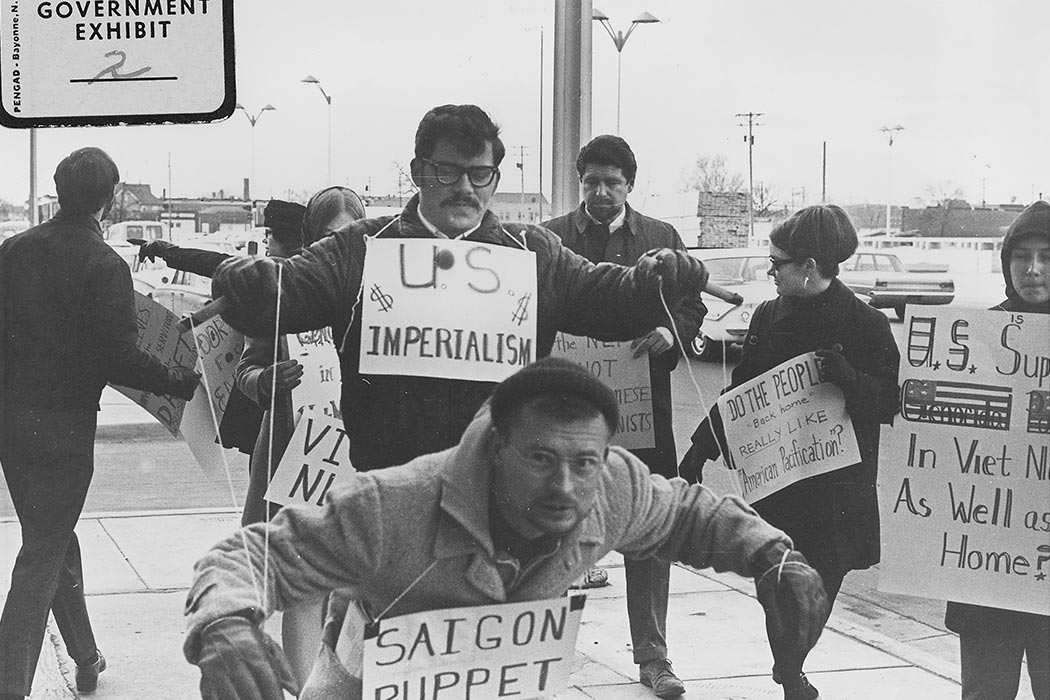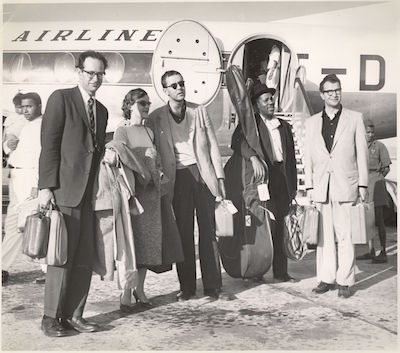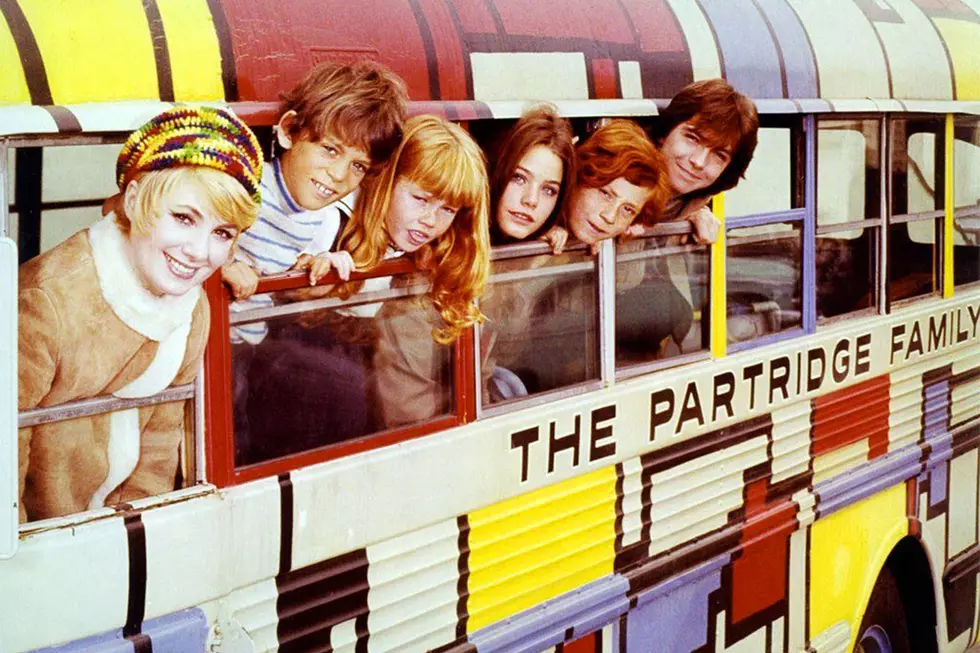34 1960s: The Rest of The Story
1960s
Jim Ross-Nazzal
WIP
This chapter begins by looking at some aspects of pop culture. A bit of lightheartedness before the reality of a bucket of cold water that was the 1960s protest movements is thrown in our collective faces. The following, written by students, examines cartoons and a new type of active board game.
Kathryn Page authored this section. She examined “the Scooby-Doo franchise, focusing on the plotline and structure of a typical episode of the cartoon, as well as some of the interesting facts that contributed to the success of the franchise, and additionally some aspects that the franchise’s success produced.”
“Scooby-Doo, Where Are You?” was the first cartoon in the franchise, premiering on September 13th, 1969.[1] The cartoon featured the Scooby Gang, who are composed of four teenagers, and Scooby-Doo, their iconic talking dog. The plot of the children’s cartoon revolves around Scooby and the Gang accidentally happening upon an endless supply of mysteries, usually because their van, The Mystery Machine, breaks down, or they get lost and end up in a ghost town. Once they are in the location where the mystery is occurring, they come across a villain who is disguised as some sort of nefarious supernatural creature; such as a ghost or zombie. Throughout the Gang’s investigation, they find out what the villains’ true intentions are, before capturing the perpetrator in an outlandish trap and unmasking the bad guy. The evil-doer is typically revealed to be some type of crooked real estate developer whose goal was to drive all of the townspeople, or whoever their intended victims were, out of town so they could buy the land they desired dirt cheap.”
“The Scooby-Doo franchise has been ongoing for over fifty years, with a variety of cartoon television shows, as well as made-for-television movies, and even some movies that premiered in theaters. Scooby-Doo was the longest-running cartoon on television, before being surpassed by The Simpsons.[2] The Frank Sinatra song “Strangers In The Night” inspired the name of the now-famous Great Dane, Scooby-Doo.[3] Throughout the years the Scooby-Doo franchise has welcomed a host of different talented guest stars including The Harlem Globetrotters and Don Knotts.[4] The actor, Frank Welker, who voices Fred Jones, the leader of the Scooby Gang, has voiced the character since the very first episode of the show and continues to be the iconic voice of Fred to this day.[5] These are just a few of the facts that contributed to or were the product of, the Scooby-Doo franchise’s success.”
“The Scooby-Doo franchise has been a multigenerational phenomenon that many families have grown up watching. Parents who watched the show as children now experience their own kids enjoying the same television show they once watched and therefore can relive the experience of seeing Scooby-Doo. The parents even feel like a kid all over again, at least for half an hour.”
Board games were typically played around a table. They were not physically active and they certainly did not result in people’s body parts coming in contact with each other. But, these were the “Swinging 60s” and so there was a new game for a new era:
Heleana Wilson looked at the history of Twister, ” . . . not to have people play with game pieces but for people themselves to be the game pieces.”
“The birth of Twister came about in 1964. Reynolds(Reyn) Guyer was an inventor and advertising executive who got the idea of Twister while tinkering with advertisement ideas for a shoe polishing company that involved colorful dots.[6] He partnered with inventor Charles Foley and artist Neil Rabens to develop a functional game using these dots. Foley suggested that they could be spaces for people to fill, and once the three agreed on the concept, Rabens constructed the mat for the game. Foley and Rabens then worked to get a patent on the game. During the process, they had to physically demonstrate the game’s directions to a confused U.S. Patent and Trademark Office.[7] Once patented, the pair brought the idea to Milton Bradley, marketing it as Pretzel. However, Bradley changed the name to Twister. The birth of Twister made Guyer nervous because Bradley was “warned, about the risks of releasing the game, a warning that was soon proved prophetic.”
“In 1966, Bradley released Twister, and as forewarned, the game came under attack. Bradley’s competitors told the public that Bradley was trying to market “sex in a box.”[8] The idea picked up quickly in the socially conservative setting of the 1960s. Additionally, some in Bradley’s company suggested that the game might be too risque for children. Twister received a bad reputation almost immediately despite the unprovocative packaging of fully suited-up individuals. To many, the thought of the opposite sex being so close was unacceptable.”
“Subsequently, sales were barely moving despite attempts to feature it at the Toy Fair and advertise the game. An additional setback came when Sears, a vital buyer for the company, refused to stock it due to the perceived vulgarity.[9] All seemed lost in that first month until a saving grace arrived. A saving grace named Johnny Carson. In May 1996, Carson and actress Eva Gabor decided to give the game a shot. The two played Twister on the Tonight Show, and it became a hit. Sales soared like never before, and even Sears got on board. In this 21st century, Twister remains a highly sold game. It was added to the Toy Hall of Fame in 2015 and was still a best-seller in 2019 . . .requiring concentration, not contraception.”

Social Movements of the 1960s
Television became the medium in which most Americans absorbed their news in the 1960s. Radio was audible and newspapers were printed but television was visual and in color so real, so lifelike, so remarkable and captivating. Remember, there were only three channels for most of the 1960s: ABC, CBS, and NBC. We won’t get PBS (Sesame Street, Mr. Rogers, etc) until 1969). And what we saw each night was a carbon copy (you don’t know what carbon paper was, do you?) what we saw each night was nearly identical to what we saw the night before: live images from Vietnam, which included combat footage, sometimes live which meant wounded and killed Vietnamese and Americans right before our very eyes. But we also saw protesters. So many protestors. People protested in the 1960s and their protests were covered by the three networks.
And those protestors met police and counter or anti-protestors. “Dignified civil rights demonstrators on the Washington Mall, flamboyant feminists protesting the Miss America contest in Atlantic City, opponents of open housing in Chicago flinging bricks and epithet at Martin Luther King, Jr., long haired antiwarriors on the streets of college towns flinging tear gas canisters back at police and National Guard.”[10]

But the 1960s were not all progressive protests. While the 1960s propelled MLK to the nation’s main stage, the good people of California launched the political career of Ronald Regan when he was elected governor in 1966. The 1960s also produced the father of the Conservative movement, Senator Barry Goldwater, and protests in the form of two political assassinations in 1968. So, protests were not always about gaining new or equal rights or freedoms. Women (and their male supporters) marched for support of their own bodies. They wanted, for example, to be able to get contraceptives without permission from their father or husband. In Griswold v. Connecticut, the Supreme Court ruled that married couples could use birth control. But single women still did not have control over their reproduction. Then in Eisenstadt v. Baird (1972), the Supreme Court established the right of unmarried women to possess contraception. In 2022 the Supreme Court reversed half a century of precedent when they took away women’s reproductive right to decide when and if they will carry a pregnancy to full term, thus forcing women to give birth. Forced birth became the law of the land in 2022. But, that’s a discussion for another chapter. Back to the 1960s.
But the majority of protestors fought for equality and an extension of freedoms. “Pillars of the new liberal establishment- from presidents of the nation to presidents of leading universities- also raised hopes for social equality, world harmony, and shared prosperity that they could never fulfill.”[11] On the other side, and this may be too simplistic, with the loss of segregation (Brown, etc), the right turned to the control of women, diminishing of women’s rights, and abortion.
“It’s generally accepted that the heyday of student activism was in the 1960s, centered around the anti-Vietnam War movement, first-wave feminism, and Berkeley’s free-speech movement . . . The activism of the 60s declined for a few reasons. Firstly, the central point of the demonstrations—the Vietnam War—wound down. The economic insecurity of the 70s onward led students to feel more worried about their personal futures than societal concerns and so the “cost” of demonstrating seemed to go up. More students, perhaps worried about their job prospects during this time, started to prefer majoring in science than the activism-heavy social sciences. The more militant tactics of 60s activism had not necessarily led to success, alienating future generations. Finally, media attention turned away from the protests, and general American politics moved to the right.”[12]

The “civil rights movement,” known by some as the “Black freedom movement,” is typically viewed through the lens of domestic players such as Malcolm X, Medgar Evers, and Barbra Jordan and events such as the integration of major league sports, March on Washington, and the Albany Movement, but the historian Kevin Gaines looks at the 20th-century civil rights movement for racial equality through the lens of internationalism.[13] First, Gaines notes that Martin Luther King, Jr., just happened to have met Vice President Richard Nixon in Ghana (which was celebrating its independence from England) and invited the Vice President to come to Alabama. “Upon his return, King regaled his congregation . . . with a euphoric account of the moment at which the Union Jack was replaced with the flag of the new nation of Ghana.” The people of Ghana began shouting “Freedom!” nd King retorted to his flock, “And I could hear that old Negro spiritual once more crying out: Free at last, free at last, Great God almighty, I’m free at last.”[14] There are other examples, such as due to the Brown decision (which noted international criticism of American civil rights record) President Eisenhower wanted to show the world that race was not America’s “Achilles Heel” so he sent abroad, as culture ambassadors Dizzy Gillespie, Louis Armstrong and Duke Ellington. The State Department also sent white jazz musicians such as Dave Brubeck and Gerry Mulligan. The original US Department of State’s jazz cultural ambassador program continued into the 1970s.


There was an explosion of non-traditional families on television in the 1960s. The Courtship of Eddie’s Father and My Three Sons were about widowers who were raising boys (with some help). The Brady Bunch is low-hanging fruit. Never an explanation as to what happened to Mike’s first wife and Carol’s first husband, though. The Partridge Family was led by the mom. Her family consisted of a band, which toured the country. Played by Shirley Jones, the mom was widowed. Then there was Julia, starring Diahann Carroll (the first tv show starring an African American woman) who was a widow raising her young son. In Julia, they explained her widow status as due to her husband’s death in Vietnam. Another unique non-traditional family show was Family Affair. In the pilot, a successful, single New York engineer Bill Davis played by Brian Keith, and his butler Mr. French, discover he is the next of kin of his brother’s three children: a pair of young twins and a high school-age girl. A social worker brings the kids to Uncle Bill’s apartment after the death of his brother and sister-in-law.

The question is why were these types of shows green-lighted by the network brass and why were they so popular among the American viewing audience? What was it about the 1960s that allowed for the acceptance of non-traditional families on tv?
As with the other chapters, I have no doubt that this chapter contains inaccuracies therefore, please point them out to me so that I may make this chapter better. Also, I am looking for contributors so if you are interested in adding anything at all, please contact me at james.rossnazzal@hccs.edu.
- Wilson, Suzanne, and Scott Seckel. “Scooby-Doo! How Old Are You?” ASU News, January 29, 2021. <https://news.asu.edu/20190726-creativity-scooby-doo-how-old-are-you.> [Accessed March 18th, 2022] ↵
- Ibid ↵
- Pirnia, Garin. “12 Fun Facts about Scooby-Doo.” Mental Floss, September 12, 2020. <https://www.mentalfloss.com/article/80937/13-fun-facts-about-scooby-doo.> [Accessed March 26, 2022] ↵
- Morgan, Chris. “The Evolution of Scooby-Doo, One of TV's Greatest Tributes to The Open Road.” pastemagazine.com. Paste Magazine, April 5, 2016. <https://www.pastemagazine.com/tv/the-evolution-of-scooby-doo-one-of-tvs-greatest-tr/.> [Accessed March 31, 2022] ↵
- Pirnia, “12 Fun Facts.” ↵
- Fox, Margalit. 2013. “Chuck Foley, Co-Creator of the Game Twister, Dies at 82.” The New York Times, July 12, 2013. https://www.nytimes.com/2013/07/12/business/chuck-foley-co-creator-of-the-game-twister-dies-at-82.html. ↵
- Waters, Michael. 2019. “When Twister Was Too Risqué for America.” Smithsonian Magazine. July 10, 2019. https://www.smithsonianmag.com/innovation/when-twister-was-too-risque-america-180972589/. ↵
- Kiger, Patrick. 2013. “The Man Who Gave Us ‘Twister.’” Blogs. July 11, 2013. https://blog.aarp.org/legacy/the-man-who-gave-us-twister. ↵
- Waters, “When Twister Was Too Risqué for America.” ↵
- Fierce Memories, Fresh Histories" Michael Kazin. OAH Magazine of History, Vl 20, No. 5, Oct. 2006, p. 5. ↵
- Ibid ↵
- https://daily.jstor.org/vietnam-mizzou-student-activism-1960s/ ↵
- "A World to Win: The International Dimension of the Black Freedom Movement," by Kevin Gaines, Magazine of History, OAH, Vol. 20, No. 5, October 2006, pp 14-18. ↵
- Ibid ↵




